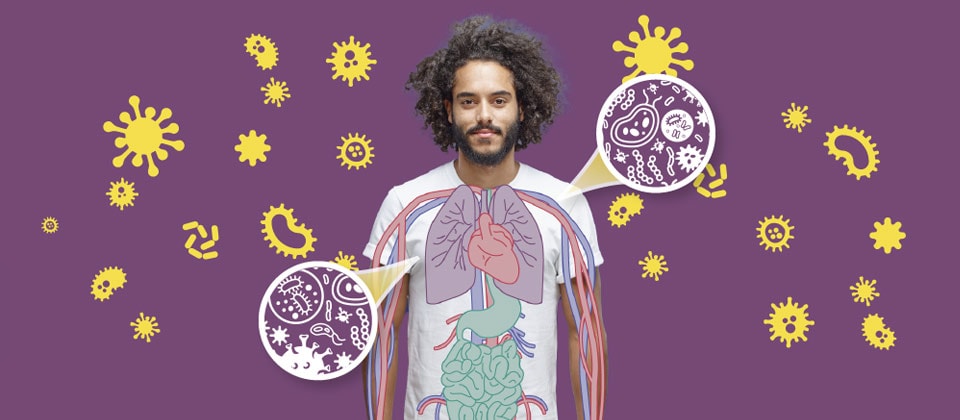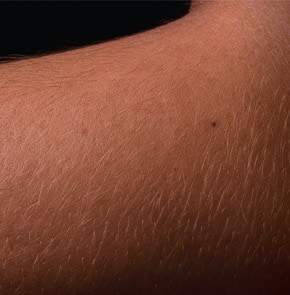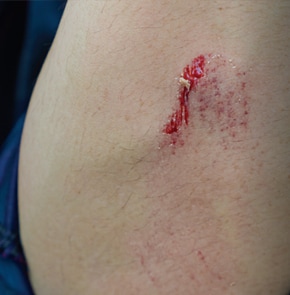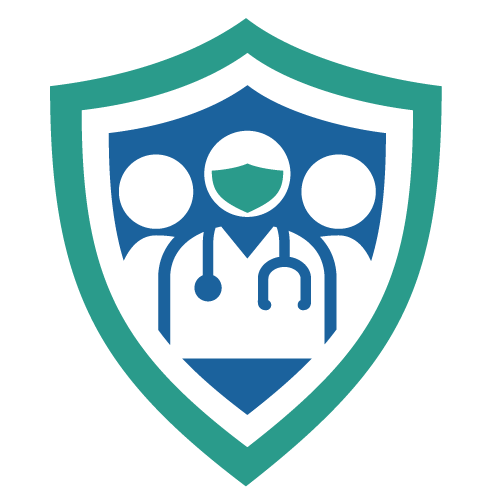Germs Live in and on the Body

The human body is full of reservoirs – places where germs can live.
Recognizing where germs live in and on the body (reservoirs) and how they can spread (pathways) can help you choose the right infection control actions to protect your patients, yourself, and your coworkers.
Common reservoirs in and on the human body include the skin, the gut the respiratory system, and blood.

Skin
- Many germs live and grow on healthy skin and normally do not cause harm.
- Your skin interacts with the environment daily, especially when you touch things with your hands.
- Pathways for germs to spread from skin include:
- Touch, especially with your hands, can spread germs to places on or in your body
- A procedure in health care that can push germs that are on the skin’s surface or on the medical device you’re using, into the patient’s body or bloodstream

Gut
- The gut, or gastrointestinal system, includes the lower intestine, rectum, and anus. It’s part of the digestive system.
- The intestines are filled with very large numbers of bacteria and yeasts, many of them helpful, but under certain circumstances can be dangerous to those with weakened immune systems.
- Pathways for germs to spread from the gut include:
- Touch, the germs in stool can easily spread onto your hands and skin and then spread to other parts of the body or to the environment
- Flushing certain toilets can also spread germs in stool

Respiratory System
- Includes nose, mouth, throat, windpipe, and lungs.
- Most of the germs that are commonly found in the upper respiratory system keep those parts of the body healthy, but when those germs get into the airway or lungs, they can cause infection.
- Pathways for germs to spread from the respiratory system include:
- Breathing in the germs in respiratory droplets or in the air
- Splashes and sprays that get into our eyes, nose, or mouth
- Touch – germs in the nose and mouth can easily be spread to the skin and hands when you touch your face

Blood
- Blood is not supposed to have germs in it.
- Blood is a very good place for germs to grow though, and is a nutritious food for bacteria.
- Pathways for germs to spread from blood include:
- The most common way that bloodborne viruses spread in health care is when a patient’s blood is on a sharp item that causes a needlestick or a cut or break in someone’s skin and then enters their body
- If blood is on linens or surfaces, bacteria in that blood can spread to others
Page last reviewed: March 11, 2022
